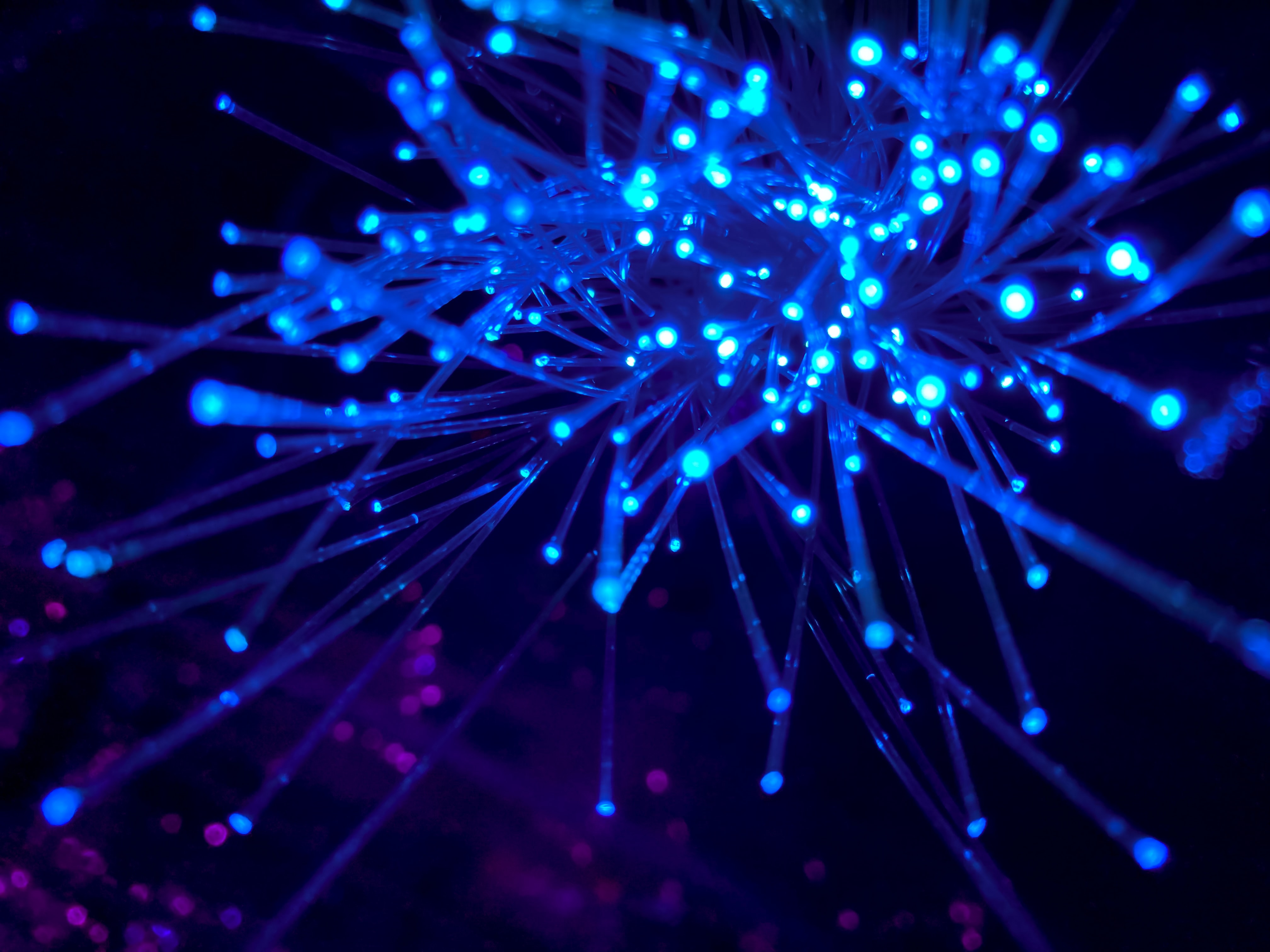Fiber Laser
A fiber laser (or fibre laser in British English) is a laser in which the active gain medium is an optical fiber doped with rare-earth elements such as erbium, ytterbium, neodymium, dysprosium, praseodymium, thulium and holmium. They are related to doped fiber amplifiers, which provide light amplification without lasing. Fiber nonlinearities, such as stimulated Raman scattering or four-wave mixing can also provide gain and thus serve as gain media for a fiber laser.
An advantage of fiber lasers over other types of lasers is that the laser light is both generated and delivered by an inherently flexible medium, which allows easier delivery to the focusing location and target. This can be important for laser cutting, welding, and folding of metals and polymers. Another advantage is high output power compared to other types of laser. Fiber lasers can have active regions several kilometers long, and so can provide very high optical gain. They can support kilowatt levels of continuous output power because of the fiber's high surface area to volume ratio, which allows efficient cooling. The fiber's waveguide properties reduce or eliminate thermal distortion of the optical path, typically producing a diffraction-limited, high-quality optical beam. Fiber lasers are compact compared to solid-state or gas lasers of comparable power, because the fiber can be bent and coiled, except in the case of thicker rod-type designs, to save space. They have lower cost of ownership. Fiber lasers are reliable and exhibit high temperature and vibrational stability and extended lifetime. High peak power and nanosecond pulses improve marking and engraving. The additional power and better beam quality provide cleaner cut edges and faster cutting speeds.
Other applications of fiber lasers include material processing, telecommunications, spectroscopy, medicine, and directed energy weapons.
High average power fiber lasers generally consist of a relatively low-power master oscillator, or seed laser, and power amplifier (MOPA) scheme. In amplifiers for ultrashort optical pulses, the optical peak intensities can become very high, so that detrimental nonlinear pulse distortion or even destruction of the gain medium or other optical elements may occur. This is generally avoided by employing chirped-pulse amplification (CPA). State of the art high-power fiber laser technologies using rod-type amplifiers have reached 1 kW with 260 fs pulses and made outstanding progress and delivered practical solutions for the most of these problems.

Comments(2)
AnonymousUser | Jan. 6, 2024, 5:33 p.m.
hi
AnonymousUser | Dec. 1, 2022, 8:19 p.m.
hggjjouio